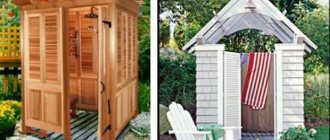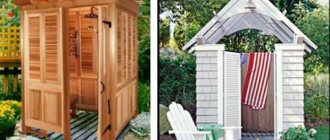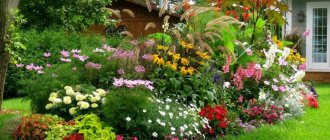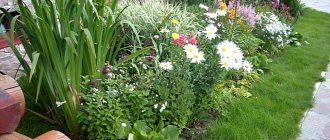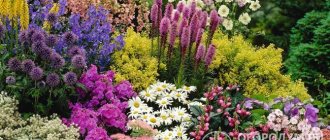There can be nothing better to decorate an area than flowers. But in order for the planted different types of flowers to look beautiful and harmonious, you need to know how to place them correctly.
Many people think that it doesn’t take much effort to arrange flowers in a flowerbed, but they are greatly mistaken, since many parameters and nuances must be taken into account.
The flowers that will grow in the flowerbed must be placed not only by color, but also by the time when each type of flower will bloom.
The proximity of flowers should also be taken into account, as this is very important. From the above it follows that designing a flower bed requires knowledge, as well as work experience.
After admiring the flower beds on the street, many women try to do the same on their own plot. But as a rule, for most this becomes an impossible task.
Features that exist in the design of a flower bed
The best option for placing flowers in a flower bed is to place them according to a specific pattern specially developed by specialists. As a rule, summer residents do not use such a complex option, but plant flowers in certain groups, at their own discretion.
As practice shows, with such a placement of flowers there is no question of any adherence to the plan. Flowerbeds planted without a plan look quite bright, but not as impressive as when following a pre-developed strict plan.
Before planting flowers, you need to decide on their location and carefully take measurements, which will be reflected in the diagram.
Initially, you need to think through everything and draw it on paper, and then proceed directly to designing the flower bed.
Flower schemes
To make it easier to navigate when creating your own scheme, we suggest that you familiarize yourself with several simple but beautiful ready-made options.
Table. Flower bed schemes.
| Scheme, photo | Description |
Scheme No. 1 | 1 – annual stock roses of three colors (white, red, yellow); 2 – decorative sunflower; 3 – Spanish poppy; 5 – cardinal lobelia; 6, 7, 8 – bell, catnip; 10 – sedum. The remaining flowers can be selected in accordance with the color indicated in the diagram. |
Scheme No. 2 | Flowerbed cake: 1 – low red flowers; 2 – white or silver flowers; 3 – medium-sized plants with red flowers; 4 and 5 – high background crops. |
Scheme No. 3 | Round flowerbed: 1 – cannas; 2 – begonia; 3 – petunia; 4 – snapdragon; 5 – marigolds; 6 – alyssum; 7 – ageratum; 8 – pyrethrum. |
Scheme No. 4 | 1 – amaranth; 2 – zinnia; 3 – garden quinoa; 4 – chard; 5 – basil; 6 – nasturtium. |
Scheme of a flower bed of shade-tolerant annuals
Planting flowers by sector
Scheme of a round flower bed of tulips, daffodils, hyacinths, scilla and mouse hyacinth
Flowerbed of bulbous plants - diagram
Simple options for placing flowers in a flower bed
One of the simplest existing patterns for placing flowers in a flower bed is circular, since it is generally accepted that working on this type of flower bed is very simple.
The main thing that determines the result is how exactly the flowers will be placed. When choosing flowers for a flower bed, pay special attention not only to the color of the flowers, but also to their actual size.
You can place tall flowers in the center of the flowerbed, and very small ones at the edges. In the remaining space you can plant flowers that will bring you joy throughout the current season. Flowers such as begonia, marigolds and many others are ideal for this.
Flower beds that have an S shape look very beautiful. As a rule, such flower beds combine up to 3 shades of flowers. Plants are used in various sizes.
This type of flower bed not only looks attractive, but it is also quite easy to implement.
How to calculate the exact number of seedlings
To calculate the required number of flower seedlings, the flower garden is conventionally divided into squares with sides of 1 m. Then they calculate how much space one plant occupies in full bloom. The resulting figure is divided by the average norm for planting this flower per 1 m2.
| Height of an adult flower | Quantity per 1 m2\pcs. |
| 1.0-1.5m. | 2-3 |
| 40-90 cm. | 4-6 |
| 20-40 cm. | 7-9 |
| 5-20 cm. | 16-20 |
The width of the crown of an adult flower should be taken into account. If it grows by 1 m or more (cresting species), then their number will be smaller.
Patterns on flower beds
If you have a rich imagination, as well as imagination, then you can create patterns and even inscriptions on the flowerbed.
In order to make a pattern, you need to decide what will act as the background; as a rule, lawn grass plays this role.
Choosing the right perennial
The question of which perennials are suitable for creating a lush flowering flower bed requires additional analysis. Mainly, attention is paid to several factors: the type of soil, the illumination of the location, the available area, the flowering cycle, the combination of type and color.
Thus, fertile lands are loved by lupine, bellflower and mallow, while too damp and swampy lands are ideal for asters, yarrow and nivaria. An admixture of loam, sand and gravel will not interfere with the growth of flax, valerian and sage, and phlox, cloves and cosmos are not afraid of dry soil.
The sun's rays play an important role in the life of plants, but not all flowers prefer flower beds in sweltering light. Different types of ferns, lilies of the valley and hosta, love shade more; for iris, primrose and astilbe, 4-6 hours of exposure to the sun is enough, and beyond this time only peonies, phlox, poppies and asters can withstand the heat.
Aconite, dicentra, hellebore, funkia, Endress geranium, plantain doronicum, musk mallow, crimson gravilate, crowded bell do not require large spaces.
It is important to take into account the plant cycle to create a flower bed of continuous flowering. For example, meconopsis blooms from May to June, delphinium from June to July, sedum blooms with buds from July to September, and sage until the end of August.
It is also necessary to calculate the desire and time to care for the front gardens. If you are not afraid of labor-intensive and lengthy care, then feel free to plant lilies, chrysanthemums, begonias, roses, hyacinth, dahlias, evening primrose and gladioli.
For the lazy, easy-care flowers are suitable: peonies, irises, astilbe, geranium, asters, daylily, sedum, phlox, bergenia, clemantis, hosta and lupine.
When choosing colors, the following recommendations are taken into account:
- Only one palette is used: warm or cold;
- The uniformity and minimum number of flowers visually increase the flower bed;
- Beautiful flower beds of perennials are obtained if you use white, pink and blue inflorescences as background;
- Saturated and calm levels should alternate;
- Red flowers should not be planted in large spaces;
- One bright and rich flower bed is enough for one garden.
Tools needed to create a flower bed
In order for the flowerbed to have a neat appearance, you will need special equipment. In order to stir the flowers in the flowerbed according to the diagram, you need to use a tape measure, which will help you take correct measurements.
In addition, you will need a shovel, a rake, and watering equipment.
Photo of flowers at the dacha
Flowers for a flower bed - creation features and simple ideas + 66 photos



